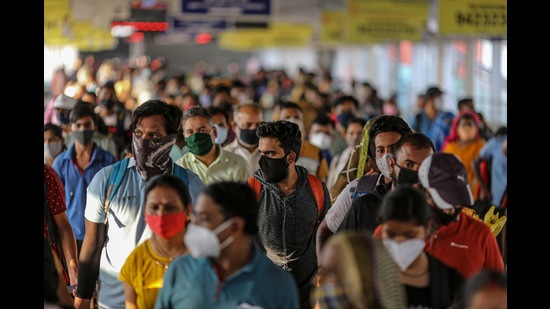11 districts record higher than Maharashtra’s average Covid weekly cases
As many as 11 districts in Maharashtra recorded a weekly positivity Covid rate that’s higher than the state average of 1.02%
As many as 11 districts in Maharashtra recorded a weekly positivity rate that’s higher than the state average of 1.02%. The districts having high positivity rates include Akola (2.77%), Amravati (2.56%), Buldhana (2.33%), Sindhudurg (2.21%), Pune (2.07%), Beed (1.79%), Nashik (1.87%), Solapur (1.39%), Palghar (1.34%), Ahmednagar (1.31%) and Sangli (1.09%).

However, the officials informed that none of these districts has a positivity rate above 5 per cent, which indicates that the Covid-19 virus is under control.
Assuring the same, the state surveillance officer Dr Pradeep Awate said, “There has been a decline in the overall positivity rate and since there are no districts above 5% positivity rates, it shows the situation is under control.” Dr Awate further added, “We are always focussing on those districts showing high positivity rates and taking steps to bring down the numbers.”
Maharashtra has been seeing a decline in the number of new as well as active cases. Currently, the state stands second in terms of active cases after Kerala.
Maharashtra on Thursday recorded 848 Covid-19 new cases with 50 deaths.
Mumbai’s tally of new cases was 174 with four deaths thus bringing its total death toll to 16,319. The total number of Covid-19 patients right from the outbreak last year has now reached 66,33,105.
There were 95,497 tests done on Thursday while the number of recoveries clocked to 974. There are currently 9187 active patients across the state of which Mumbai tops with 2525 patients followed by Pune and Ahmednagar with 1982 and 1068 active cases respectively.
The death toll has now reached 1,40,857 with Pune leading with 19,694 deaths followed by Mumbai with 16,319 and Thane with 11,558.
Professor of medicine at Grant Medical College and Sir JJ Hospital Dr Wiqar Shaikh cautions that a third wave may hit next year if steps aren’t taken to control the cases. “In immunological terms, this is the thick tail of the second wave which has delayed the third wave. The history of pandemics has shown that there will be multiple waves and hence the third will come next year. The real challenge is to mitigate the effects of the third wave,” said Dr Shaikh. He cited Europe which is witnessing the fourth wave which he cites as a disaster as there has been a surge in cases as well as deaths.
Stay updated with all the Breaking News and Latest News from Mumbai. Click here for comprehensive coverage of top Cities including Bengaluru, Delhi, Hyderabad, and more across India along with Stay informed on the latest happenings in World News.
Stay updated with all the Breaking News and Latest News from Mumbai. Click here for comprehensive coverage of top Cities including Bengaluru, Delhi, Hyderabad, and more across India along with Stay informed on the latest happenings in World News.





